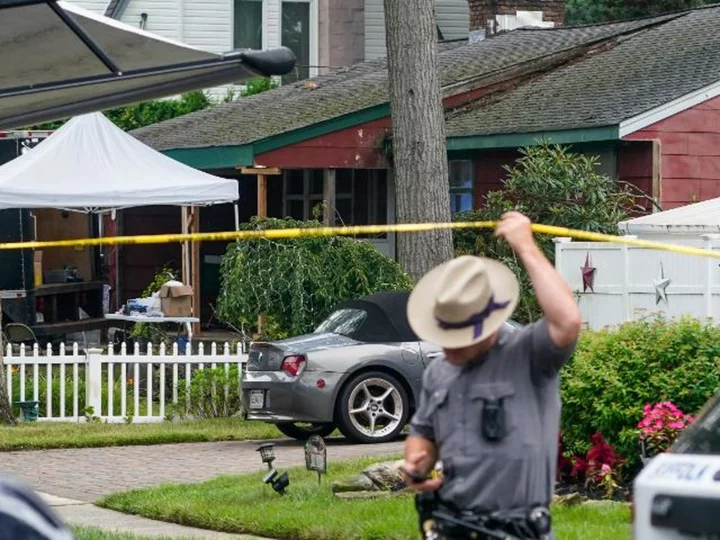Since the spring of this year, investigators looking into the Gilgo Beach serial killings case have been operating on the theory that the suspect, Rex Heuermann, committed the killings in his Massapequa Park, New York, home.
A source involved in the investigation told CNN the fact that the disappearances occurred during times his family was out of town suggests he may have lured victims to the Long Island home.
Investigators believe committing the killings at home would have given Heuermann control of the environment and access to materials that were found at the crime scene, including tape and burlap bags, the source said.
One of the reasons the search of the suspect's home has taken so long is because investigators are also combing for trace evidence that may be linked to the victims, multiple sources said.
Heuermann was arrested in New York City last week and charged with murder in the deaths of three of the "Gilgo Four," a group of four women whose remains were found along a short stretch of Long Island's Gilgo Beach in 2010.
The 59-year-old architect has pleaded not guilty in the killings of Melissa Barthelemy, Megan Waterman and Amber Lynn Costello.
He is also the prime suspect in the 2007 disappearance and killing of the fourth victim, Maureen Brainard-Barnes, according to a bail application from prosecutors. He has yet to be charged in that homicide case but the investigation "is expected to be resolved soon," the document says.
Strands of hair were key in the investigation
Strands of hair were among the key evidence that helped investigators bring Heuermann into custody.
In the initial examination of Waterman's skeletal remains, investigators found a male hair from the "bottom of the burlap" the killer used to wrap her body, prosecutors said.
In addition, female hair now believed to be from Heuermann's wife was found on or near three of the victims, prosecutors allege in the bail application.
But when they were found in 2010, the hairs were degraded, and DNA testing at the time couldn't yield the results investigators hoped for.
It wasn't until more than a decade later that improved technology offered answers.
Once authorities identified Heuermann as a suspect in early 2022 using cell phone data, witness descriptions and other information, they began watching him and his family, and collected DNA samples from items in their trash.
They got a complete sample of his DNA from leftover crust in a pizza box he discarded -- and it matched the one from the male hair investigators had collected so many years ago, according to Suffolk County District Attorney Ray Tierney.
Heuermann's wife has now filed for divorce
Heuermann's family was shocked, disgusted and embarrassed when authorities informed them of the crimes he is accused of, Suffolk County Police Commissioner Rodney Harrison told CNN's Erica Hill on Monday.
"I don't believe that they knew about this double life that Mr. Heuermann was living," Harrison said.
On Wednesday -- less than a week since Heuermann's arrest -- his wife, Asa Ellerup, filed for divorce, her attorney said. The two were married in April 1996 and lived since then in the suspect's childhood home in the Long Island suburb of Massapequa Park with their daughter and Heuermann's stepson.
Ellerup "and her family are going through a devastating time in their lives," a Thursday statement from her attorneys said. "The sensitive nature of her husband's arrest is taking an emotional toll on the immediate and extended family, especially their elderly family members."
"Ms. Ellerup does not wish to comment further and has requested the public and press to please respect the family's privacy at this time."









